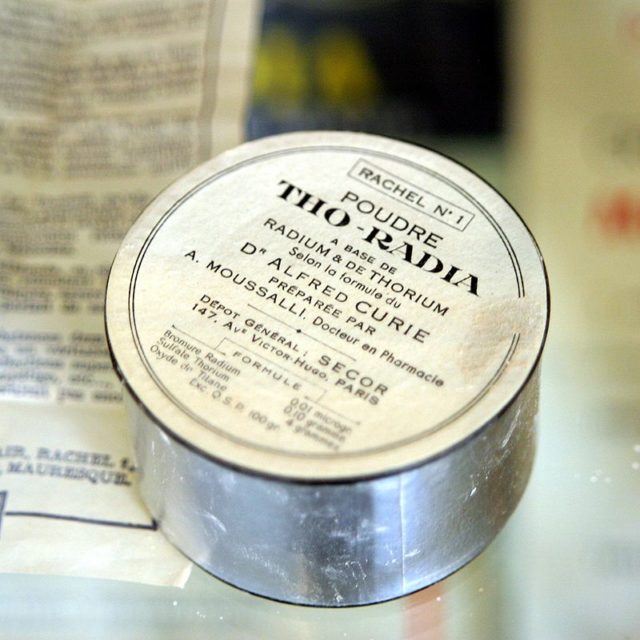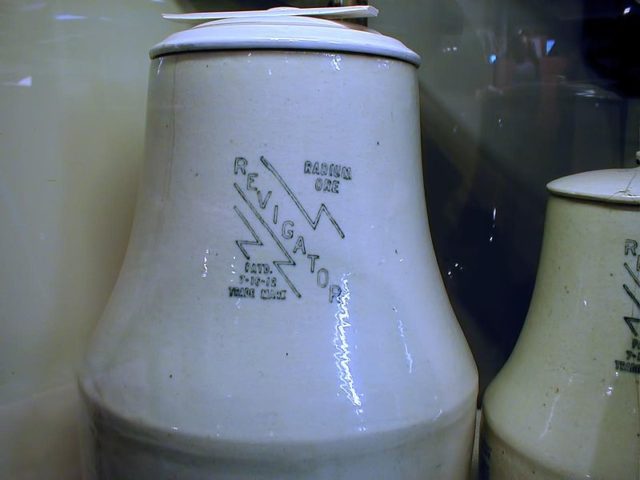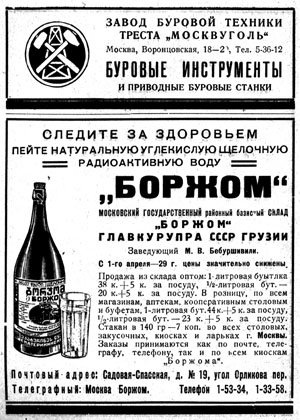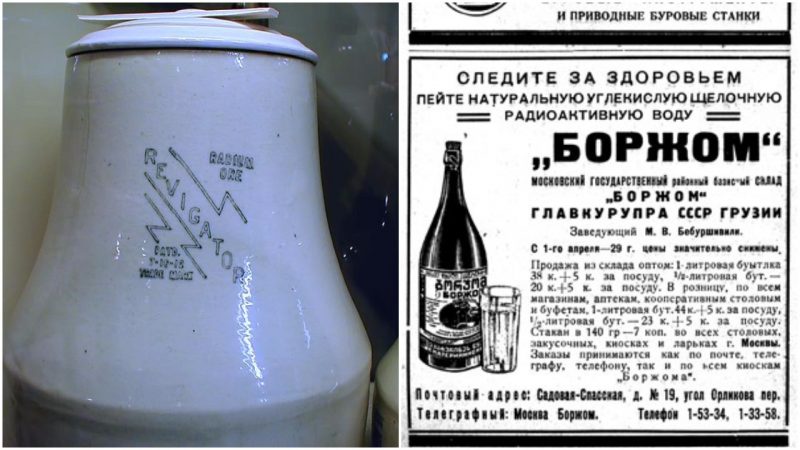After Marie and Pierre Curie discovered radium, products that contained the luminous element were extremely popular for several decades before the dangerous side effects of radioactivity were discovered.
Many entrepreneurs worldwide saw radium-infused products as a good source of income during the early decades of the 20th century, a period known as the “Radium Craze.”

Most products that contained radium were, in fact, pseudo-scientific and often proved to be nothing more than elaborate hoaxes. Some of the products that were advertised as potent remedies were extremely dangerous, as their long-time use caused cancer, lesions of the brain, and deterioration of the bones. Still, many people used them, and many entrepreneurs made money by cleverly fooling gullible consumers.
One such product was the Radium Ore Revigator, a pseudo-scientific device patented by R. W. Thomas in 1912. It was used to spike water with radium or uranium.
The device was basically a thick ceramic pot whose inner sides were plated with radioactive material. The device was to be filled with water and left overnight so that the water would absorb a significant amount of radium.

“Radium water” was advertised as a healthy product that could cure arthritis, flatulence, and senility. When the dangerous effects of radioactivity were finally discovered in the early 1930s, it was concluded that the water prepared in the Radium Ore Revigator did not contain levels of radium that would cause acute radiation poisoning, However, it was also filled with arsenic, lead, vanadium, and uranium, so its long-term use would inevitably cause various illnesses.
In early 20th century Russia, radioactive water was also a major hit. Borjomi mineral water, which is hugely popular today, was once advertised as a drink that contained a high concentration of radioactive uranium isotopes.
Because of this, it was considered to be very healthy, and many people tried it to cure various illnesses. Nowadays, Borjomi mineral water’s recipe is slightly different, as it doesn’t contain any life-threatening elements.

During the “Radium craze” many household items contained dangerous radioactive chemicals. Many brands of toothpaste were infused with radium to attract customers because the toothpaste would glow in the dark. Also, many watches were made with radium hands, which caused many workers who made them develop a serious inflammation called “the Radium jaw.”
Read another story from us: An energy drink that contained radium was actually a thing in the 1920s
Medicine has been particularly prone to advertising radium-infused products, and products like facial powder, shampoos, tinctures and therapeutic paraphernalia were often lethal instead of helpful.
